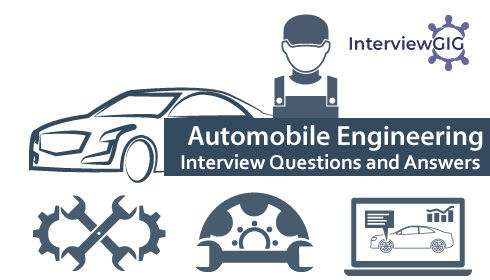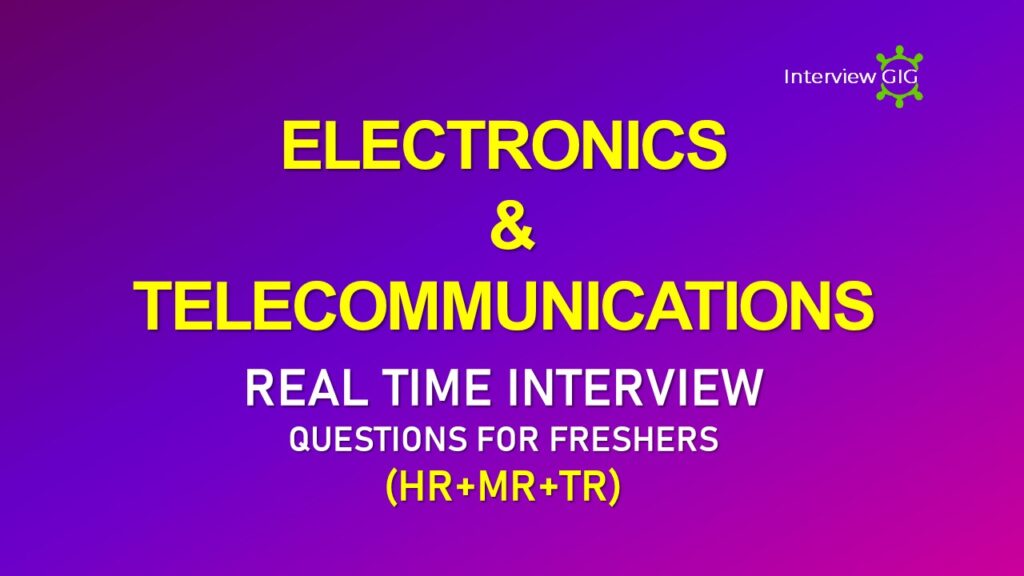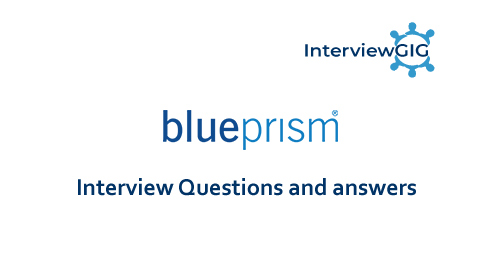What is electronics?
Electronic is a study and use of electrical devices that operate by controlling the flow of electrons or other electrically charged particles. Electronics is a subfield within the wider electrical engineering that covers subfields such as analog electronics, digital electronics, consumer electronics, embedded systems and power electronics.
What are the responsibilities of electronic and communication engineers?
All of the applications which make our life easier and enjoyable such as Television, Radio, Computers, Mobiles etc. are designed and developed by Electronics and Communication Engineers
- Design and maintain satellites, which bring TV, telephone and Internet service into remote and rural regions.
- ECE Engineers also creates advanced communication facilities like video conferencing which bring people together from all over the world.
- Develops programs for various control and communication systems.
- And the electrical engineers are works in the various fields such as the service engineer, software analyst, technical director, field test engineer, senior sales manager, network planning Engineer, customer support engineer, electronic and communications consultant, and research development software engineer, etc.
- Electrical engineers are enjoying such modern communication devices as cellular telephones, radios and televisions.
What is communication?
Communication means transferring a signal from the transmitter which passes through a medium then the output I’d obtained at the receiver. (Or) the transferring of message from one place to another place is called communication.
What are the types of communications and it explain?
Communications are classified in to two types. They are:
Analog is the process of taking an audio or video signal and translating into electronic pulses. Digital on the other hand is breaking the signal into a binary format. Where the audio or video data is represented by a series of “0”s and “1”s.
Digital signals are immune to noise, quality of transmission and reception is good, components used in digital communication can be produced with high precision and power consumption is also very less when compared with analog signals.
What is the difference between electronic and electrical?
Electronic work on DC and with a voltage range of -48vDC to +48vDC. If the electronic device is plugged into a standard wall outlet, there will be a transformer inside which will convert the AC voltage you are supplying to the required DC voltage needed by the device. Examples are computer, radio, TV, etc.
Electric device use line voltage (120vAc, 240vAC, etc.…). Electric devices can also be designed to operate on DC sources but will be at DC voltages above. Examples are incandescent lights, heaters, fridge, stove, etc…
What is modulation and demodulation?
Modulation is the process of varying some characteristic of a periodic wave with an external signal. Radio communication superimposed this information bearing signal onto carrier Signals. These high frequency carrier Signals can be transmitted over the air easily and are capable of travel long distances.
The characteristics (amplitude, frequency, or phase) of the carrier signal are varied in accordance with the information bearing signal. Modulation is utilized to send an information bearing signal over long distance.
Demodulation is the act of removing the modulation from an analog signal to get the original baseband signal back. Demodulation is necessary because the receiver system receives a modulated signal with specific characteristics and it needs to turn it to baseband.
What is AM and FM? And where do we use AM and FM?
AM: In the amplitude modulation, the amplitude of a carrier signal is varied by the modulating signal. Here information signal is the modulating signal and high frequency signal which is being modulated is the carrier signal. AM is used for video signals for example tv. It ranges from 535 to 1705 KHZ.
FM: Frequency modulation is a system in which the amplitude of the modulated carrier is kept constant, while its frequency is varied by the modulating signal. FM is used for audio signals for example radio. It ranges from 88 to 108 MHZ.
What is the insulators?
Materials having very low value of conductivity are known as insulators. Insulators completely opposes the flow of charge when a voltage source is applied across its terminals. Usually, insulators contain less than 106free electron per cubic centimeter. Example of insulator is ‘mica’.
What is conductors and semiconductors?
Materials having very high value of conductivity are known as conductors. Conductors support a generous flow of change when a voltage source is applied across it terminals. Usually conductor is containing approximately 1021 free elections for cubic centimeter of the material. Example of conductor is `copper’.
Materials having conductivity value between in extreme of an insulator and conductor and semiconductors. Semiconductors conduct moderately (at room temperature) when a voltage source is applied across its terminals. Examples of semiconductor are `silicon’ (
Si) and `germanium’ (Ge).
What is cut-off frequency?
The frequency at which the response is 3dB with respect to the maximum
What is control system?
It is a system the output is input are interested related in such a manner that the output quantity is a valuable controlled by input quantity, then the such a system is called control system the output quantity is called control variable are the response and the input quantity is called command signal or excitation.
What is feedback in control system?
Feedback in control system is one in which the output is sampled and proportional signal is fed back to the input for automatic correction of the error (any change in desired output) for further processing to get back the desired output.
Why negative feedback is preferred in the control system?
The role of feedback in control system is to take the sampled output back to the input and compare output signal with input signal for error (deviation from the desired result). Negative feedback results in the better stability of the system and rejects any disturbance signals and is less sensitive to the parameter variations. Hence in control systems negative feedback is considered. The characteristics of the negative feedback are:
- Reduction in the gain at the expense of better stability of the system.
- Rejection of disturbed signals in the system.
- Low sensitivity to parameter variations.
- Accuracy in tracking the steady state value.
What is the effect of positive feedback on stability of the system?
Positive feedback is not used generally in the control system because it increases the error signal and drives the system to instability. But positive feedbacks are used in minor loop control systems to amplify certain internal signals and parameters.
What is base station?
Base station is a radio receiver or transmitter that serves as the hub of the local wireless network and may also be gateway between a wired network and the wireless network.
How many satellites are required to cover the earth?
3 satellites are required to cover the entire earth, which is placed at 1200 to each other. The life span of satellite is about 15 years.
Example for negative and positive feedback?
Example for negative feedback is Amplifiers and for positive feedback is Oscillators.
What is Oscillator?
An oscillator is a circuit that creates a waveform output from a direct current input. The two main types of oscillator are harmonic and relaxation. The harmonic oscillators have smooth curved waveforms, while relaxation oscillators have waveforms with sharp changes.
What is an Integrated Circuit?
An integrated circuit (IC), also called a microchip, is an electronic circuit etched onto a silicon chip. Their main advantages are low cost, low power, high performance, and very small size.
What is crosstalk?
Crosstalk is a form of interference caused by signals in nearby conductors. The most common example is hearing an unwanted conversation on the telephone. Crosstalk can also occur in radios, televisions, networking equipment, even electric guitars.
What are the functions of Base Station System (BSS)?
Functions of BSS are as follows:
- Radio path control.
- BTS and TC control.
- Connection establishment with MS-NSS.
- Mobility management, speech transcending.
- Connection of statistical data.
What are the parts of Network Management System (NMS)?
Following are the parts of network management system:
OMC (Operation and maintenance center): Computerized monitoring center.
NMC (Network Management Center): Centralized control of a network is done here.
OSS (Operation and support system): It is used for supporting activities performed in an OMC and/or NMC.
What is analog-to-digital conversion of signals?
A discrete-time signal is defined by specifying its value only at discrete times, called sampling instants. When the sampled values are quantized and encoded, a digital signal is obtained. A digital signal is obtained from the analog signal by using an analog-to-digital converter. This entire process is referred to as the conversion of signals from analog to digital form.
What are applications of DSP?
Some selected applications or digital signal processing that are often encountered in daily life are listed as follows:
- Telecommunication: Echo cancellation in telephone networks.
- Military Radar signal processing.
- Consumer electronics Digital Audio/TV.
- Instrumentation and control.
- Image processing image representation, image compression.
- Speech processing speech analysis methods are used in automatic speech recognition.
- Medicine Medical diagnostic instrumentation such as computerized tomography (CT).
- Signal filtering removal of unwanted background noise.
Explain Bluetooth?
Bluetooth is designed to be a personal area network, where participating entities are mobile and require sporadic communication with others. It is Omni directional i.e. it does not have line of sight limitation like infra-red does. Ericsson started the work on Bluetooth and named it after the Danish king Harold Bluetooth. Bluetooth operates in the 2.4 GHz area of spectrum and provides a range of 10 meters. It offers transfer speeds of around 720 Kbps.
What is the need for load flow study?
The load flow study of a power system is essential to decide the best operation existing system and for planning the future expansion of the system. It is also essential for designing the power system.
What is the need for base values?
The components of power system may operate at different voltage and power levels. It will be convenient for analysis of power system if the voltage, power, current ratings of the components of the power system is expressed with reference to a common value called base value.
What is CDMA?
CDMA stands for Code Division Multiple Access which uses digital format. In CDMA systems several transmissions via the radio interface take place simultaneously on the same frequency bandwidth. User data is combined at the transmitter’s side with a code, then transmitted. On air, all transmission get mixed. At the receiver’s side the same code is used as in the transmitter’s side.
The code helps the receiver to filter the user information of the transmitter from incoming mixture of all transmissions on the same frequency band and same time.
Explain the concept of frequency re-use?
The whole of the geographical area is divided into hexagonal shape geometrical area called cell and each cell having its own transceiver. Each BTS (cell site) allocated different band of frequency or different channel. Each BTS antenna is designed in such a way that cover cell area in which it is placed with frequency allotted without interfering other sell signal.
What are different categories of antenna and give an example of each?
Different categories of antenna are:
- Wire antennas-short dipole antenna
- Micro strip antennas – rectangular micro strip (patch) antennas
- Reflector antennas – corner reflector
- Travelling wave antennas – helical antennas
- Aperture antennas – slot antenna
- Other antennas – NFC antennas.
What is pass band?
Passband is the range of frequencies or wavelengths that can pass through a filter without being attenuated.
What is stop band?
A stop band is a band of frequencies, between specified limits, in which a circuit, such a filter or telephone circuit, does not let signals through, or the attenuation is above the required stop band attenuation level.
Define RF?
Radio frequency (RF) is a frequency or rate of oscillation with the range of about 3HZ to 3GHZ. This range corresponds to frequency of alternating current electrical signals used to produce and detect radio waves since most of this range is beyond the vibration rate that most mechanical systems can respond to, RF usually refers to oscillations in electrical circuits or electromagnetic radiation.
What is an amplifier?
An electronic device or electrical circuit that is used to boost (amplify) the power, voltage or current of an applied signal.
What is a repeater?
A repeater is an electronic device that receives a signal and retransmits it at a higher level and/or higher power, or onto the other side of an obstruction, so that the signal can cover longer distances without degradation.
What is handover and what are its types?
Handover in mobile communication refers to the process of transferring a call from one network cell to another without breaking the call. There are two types of handover which are as follows:
Hard Handoff: hard handoff is the process in which the cell connection is disconnected from the previous cell before it is made with the new one.
Soft Handoff: It is the process in which a new connection is established first before disconnecting the old one. It is thus more efficient and smart.
What is ionospheric bending?
When a radio wave travels into the ionospheric layer it experiences refraction due to difference in density. The density of ionospheric layer is rarer than the layer below which causes the radio wave to be bent away from the normal. Also, the radio wave experiences a force from the ions in the ionospheric layer. If incident at the correct angle the radio wave is completely reflected back to the inner atmosphere due to total internal reflection.
This phenomenon is called ionospheric reflection and is used in mobile communication for radio wave propagation also known as ionospheric bending of radio waves.
What is diode?
In electronics, a diode is a two-terminal device. Diodes have two active electrodes between which the signal of interest may flow, and most are used for their unidirectional current property.
What is transistor?
In electronics, a transistor is a semiconductor device commonly used to amplify or switch electronic signals. The transistor is the fundamental building block of computers, and all other modern electronic devices. Some transistors are packaged individually but most are found in integrated circuits.
What is op-amp?
An operational amplifier, often called an op-amp, is a DC-coupled high-gain electronic voltage amplifier with differential inputs and, usually, a single output. Typically, the output of the op-amp is controlled either by negative feedback, which largely determines the magnitude of its output voltage gain, or by positive feedback, which facilitates regenerative gain and oscillation.
What is Barkhausen criteria?
Barkhausen criteria, without which you will not know which conditions, are to be satisfied for oscillations. “Oscillations will not be sustained if, at the oscillator frequency, the magnitude of the product of the transfer gain of the amplifier and the magnitude of the feedback factor of the feedback network (the magnitude of the loop gain) are less than unity”.
The condition of unity loop gain -A? = 1 is called the Burkhouse criterion. This condition implies that A? = 1and that the phase of – A? is zero.
What are main divisions of power system?
The main divisions of power system are generating system, transmission system, and distribution system.
What is impedance diagram?
The equivalent circuit of all the components of the power system are drawn and they are interconnected is called impedance diagram.
What is Instrumentation Amplifier (IA) and what are all the advantages?
An instrumentation amplifier is a differential op-amp circuit providing high input impedances with ease of gain adjustment by varying a single resistor.
Name the modulation techniques?
For Analog modulation–AM, SSB, FM, PM.
SM Digital modulation–OOK, FSK, ASK, Psk, QAM, MSK, CPM, PPM, TCM, OFDM.
What is Fermi level?
The maximum energy that the electron in a mental has at the absolute zero temperature is called the Fermi level of the energy.
What is hole current?
The movement of the hole (positively charged vacancy in the balance band) from positive terminal of the supply to negative terminal through semiconductor constitutes hole current.
What is intrinsic semiconductor?
An intrinsic semiconductor is one which is made of the semiconductor material in the extremely pure from (impurity content not exceeding one part in 100 million parts of semiconductors).
Define mean life of a carrier?
The amount of time between the creation and disappearance of a free electron is called the life time. It varies from a few nanoseconds to several microseconds depending how perfect the crystal is and other factors.
Define diffusion current in a semiconductor?
The diffusion of charge carriers is a result of a gradient of carrier concentration (i.e, the difference of carrier concentration from one region to another). In this case concentration of charge carriers (either electrons or holes) tend to distribute themselves uniformly throughout the semiconductor crystal. This movement continues until all carriers are evenly distributed throughout the material. This type of movement of charge carriers is called diffusion current.
Define drift current in a semiconductor?
The steady flow of electrons in one direction caused by applied electric field constitutes an electric current called the drift current.
What happens to the conductivity of semiconductor with the rise in temperature?
Compare with the conductivity of metals. With the increase in temperature, the concentration of charge carriers increases resulting in increase in conductivity of semiconductors. The conductivity of metal decreases with the increase in temperature.
Can you explain FDMA, TDMA, OFDMA, SDMA, and CDMA?
FDMA: FDMA (Frequency Division Multiple Access) is the process of dividing one channel or bandwidth into multiple individual bands, each for use by a single user. Each individual band or channel is wide enough to accommodate the signal spectra of the transmissions to be propagated. The data to be transmitted is modulated on to each subcarrier, and all of them are linearly mixed together. Only disadvantage is Inflexible, frequencies are scarce resource
TDMA: TDMA (Time Division Multiple Access) is a digital technique that divides a single channel or band into time slots. Each time slot is used to transmit one byte or another digital segment of each signal in sequential serial data format. This technique works well with slow voice data signals, but it’s also useful for compressed video and other high-speed data. Only disadvantage is Guard space needed (multipath propagation), synchronization difficult
OFDMA: OFDMA (Orthogonal frequency division multiplexing) is the access technique used in Long-Term Evolution (LTE) cellular systems to accommodate multiple users in a given bandwidth. OFDM is a modulation method that divides a channel into multiple narrow orthogonal bands that are spaced so they don’t interfere with one another. Each band is divided into hundreds or even thousands of 15-kHz wide subcarriers.
SDMA: SDMA (Space-division multiple access) uses physical separation methods that permit the sharing of wireless channels. For instance, a single channel may be used simultaneously if the users are spaced far enough from one another to avoid interference. Known as frequency reuse, the method is widely used in cellular radio systems. Cell sites are spaced from one another to minimize interference. Only disadvantage is Inflexible, antennas typically fixed.
CDMA: CDMA (Code Divisional Multiple Access) is another pure digital technique. It is also known as spread spectrum because it takes the digitized version of an analog signal and spreads it out over a wider bandwidth at a lower power level. This method is called direct sequence spread spectrum (DSSS) as well. The digitized and compressed voice signal in serial data form is spread by processing it in an XOR circuit along with a chipping signal at a much higher frequency. Only disadvantage is Complex receivers, needs more complicated power control for senders.
What is the difference between CDMA, TDMA, and FDMA?
CDMA: Code division multiple access (CDMA) is a channel access method utilized by various radio communication technologies. CDMA employs spread-spectrum technology and a special coding scheme (where each transmitter is assigned a code) to allow multiple users to be multiplexed over the same physical channel. By contrast, time division multiple access (TDMA) divides access by time, while frequency-division multiple access (FDMA) divides it by frequency.
An analogy to the problem of multiple access is a room (channel) in which people wish to communicate with each other. To avoid confusion, people could take turns speaking (time division), speak at different pitches (frequency division), or speak in different directions (spatial division). In CDMA, they would speak different languages. People speaking the same language can understand each other, but not other people. Similarly, in radio CDMA, each group of users is given a shared code. Many codes occupy the same channel, but only users associated with a particular code can understand each other.
What is multiplexing?
Multiplexing (knowing as muxing) is alarm used to refer to process where multiple analog message signals or digital data streams are combined into one signal over a shared medium. The aim is to share an expensive resource. For example, in telecommunications, several phone calls may be transferred using one wire.
Explain full duplex and half duplex?
- Full duplex refers to the transmission of data in two directions simultaneously. For example, a telephone is a full duplex device because only one party can transmit at a time.
- Most modems have a switch that lets you choose between full duplex and half duplex modes. This choice depends on which communication program you aware running.
- In full duplex mode, data you transmit does not appear on your screen until it Haas been received sand sent back by other party. This enables you to validated the data the data Haas been accurately transmitted. If you display screen shows two of as each character. It probably means that your modem is set to half duplex mode when it should be in full duplex mode.
What is transducer and transponder?
A transducer is a device, usually electrical, electronic, electro-mechanical, photonic, or photovoltaic, electromagnetic that converts one type of energy or physical attribute to another for various purposes including measurement or information transfer.
In telecommunication, the term transponder (shot- for transmitter-responder and sometimes abbreviated to XPDR, XPNDR, TPDR or TP) has the following meanings: An automatic device that receives, amplifies and retransmits a signal on a different frequency (see also broadcast translator).
An automatic device that transmits a predetermined message in response to a predefined received signal. A receiver- transmitter that will generate a reply signal upon proper electronic interrogation a communication satellite’s channels are called transponder, because each is a separate transceiver or repeater.
What are drawbacks of Walsh codes?
Walsh codes have the following drawbacks:
- The codes do not have a single, narrow auto correlation peak.
- The spreading is not over the whole bandwidth; instead the energy is spread over a number of discrete frequency components.
- Although the full sequence cross correlation is identically zero, this does not hold for a partial sequence cross correlation function. Thus advantage of using orthogonal codes is lost.
- Orthogonality is also affected by channel properties like multi path.
Explain radio environment in building?
Building penetration: Building penetration depends on the material used for construction and architecture used. This varies building to building and is based on building construction.
Building Height Effect: The signal strength is always higher at top floor and generally floor gain height is about 2.7dB/floor which is not dependent on building construction.
Building Floor Reception: The signal isolation between floors in a multi floor building is on the average about 20dB. Within a floor of 150×150 feet, the propagation loss due to interior walls, depending on the wall materials is about 20 dB between the strong and the weak areas.
What are GPRS services?
GPRS services are defined to fall in one of the two categories:
PTP (Point to point)
PTM (Point to Multi point)
Some of the GPRS services are not likely to be provided by network operators during early deployment of GPRS due in part to the phased development of standard. Market demand is another factor affecting the decision of operators regarding which services to offer first.
What are the various types of numbers for network identity?
Various types of number for network identity are as follows:
MSISDN (Mobile station ISDN) Number: It is international mobile subscriber number which is normally called mobile number. It is unique worldwide.
MSRN (Mobile Subscriber Routing Number): MSRN is used during mobile terminate trunk call to provide location of mobile subscriber.
HON (Hand over Number): HON is used for providing information required to transfer call from one BSC to another BSC or to another MSC.
ISMI (International Mobile Subscriber Identity Number): Purpose of ISMI is for location update and authentication.
TMSI (Temporary Mobile Subscriber Identity): TMSI is used instead of IMSI to improve security efficiency of network.
C IMEI: International Mobile Equipment Identity.
Explain the steps involved in demodulating a signal?
Once the signal is coded, modulated and then sent, the receiver must demodulate the signal. This is usually done in two steps: Spectrum spreading (e.g., direct sequence or frequency hopping) modulation is removed. The remaining information bearing signal is demodulated by multiplying with a local reference identical in structure and synchronized with received signal.
List some advantages of GSM?
Here are some advantages of GSM:
- GSM is mature; this maturity means a more stable network with robust features.
- Less signal deterioration inside buildings.
- Ability to use repeaters.
- Talk time is generally higher in GSM phones due to pulse nature of transmission.
- The availability of Subscriber Identity Modules allows users to switch networks and handset at will.
- GSM covers virtually all parts of world so international roaming is not a problem.
- How can a Pseudo Random Noise Code be usable?
- To be usable for direct sequence spreading, a PN code must meet the following conditions:
- Sequence must be built from two leveled numbers.
- The codes must have sharp auto correlation peak to enable code synchronization.
- Codes must have a low cross-correlation value, the lower it is, more are the number of users which can be allowed in the system.
- The codes should be “balanced” i.e. the difference between ones and zeros in code may only be one.
What has to be memory space in 8-bit microprocessor?
64kb memory space in 8-bit microprocessor.
What is as protocol?
Protocol is a set of rules that governs data communication.
Define binary logic?
Binary logic consists of binary variables and logical operations. The variables are designed by the alphabets such as A, B, C, x, y, z, etc., with each variable having only two distrint values 1 and 0. There are three basic logic operations that are AND, OR, NOT.
State the steps involved in gray to binary conversion?
The MSB of the binary number is same as the MSB of the gray code number. So write it down. To obtain the next binary digit, perform an exclusive or operation between the bit just written down and the next gray code bit. Write down the result.
What are the frequency range in 8051 microcontrollers?
The frequency range is in between 3.5 MHz to 12 MHz
What are some applications of buffer?
- They are used to introduce small delays.
- Used to eliminate cross talk caused due to inter electrode capacitance due to close routing.
- They are used to support high fan out.
What is transducer?
Transducer converts a physical variable to an electrical variable.
Describe offset error for a DAC (Digital Analog Converter)?
More or less input voltage is required for first step than what is specified.
What is the difference between PLA and PAL?
The PLA (programmable logic array) both AND and OR arrays are programmable. Costliest and complex than PAL. And array can be programmed to get desired minterms. Any Boolean functions in SOP from can be implemented using PLA.
PAL (programmable array logic) OR array is fixed and AND array is programmable. Cheaper and simpler. And array can be programmed to get desired minterms. Any Boolean functions in SOP form can be implemented using PLA.
What is microprocessor?
A microprocessor sometimes called a logic chip. It is like cpu and it control the total computer peripherals. The microprocessor also called as microchip
Difference between the 8086 and 8088?
8086 has 16-bit datd lines. 8086 is available in three clock speeds 5 MHz, 8 MHz, 10 MHz the memory space if 8086 is organized as two 512 kb banks. It is 6-byte instruction queue. The 8086 can be read or write 8bit or 16bit data at a time. The I-on voltage levels for 8086 is measured at 2.5mA. 8086 as BHE (bus high enables signal).
8088 has 8bit data lines. 8088 is available in two clock speed 5 MHz, 8 MHz the memory space of 8088 is implemented as single 1mb×8 memory banks. It has 4byte instruction queue. The 8088 can be read or write 8bit data at a time. The I-o voltage levels for 8088 is measured at 2.5mA. 8088 as sso (signal sign on).
What is the importance of valence shell and valence electrons?
The outermost shell of an atom is called valence shell and electrons in this shell are called valence electrons. Formation of energy bands occur owing to overlapping of energy levels of these valence electrons in valence shells. With the decrease in interatomic distance between the atoms in a crystal, the energy levels of electrons in outermost shells of atoms overlap to form energy bands.
What is the forbidden energy gap? How does it occur? Define wheat is its magnitude for Ge and Si?
The energy gap between the valence band and conduction band is known as forbidden energy gap. It is as region in which no electron can stay as there is no allowed energy state. Magnitude of forbidden energy gap in germanium and silicon is 0.72eV sand 1.12eV respectively at 300k and 0.785eV sand 1.21eV respectively at absolute zero temperature.





